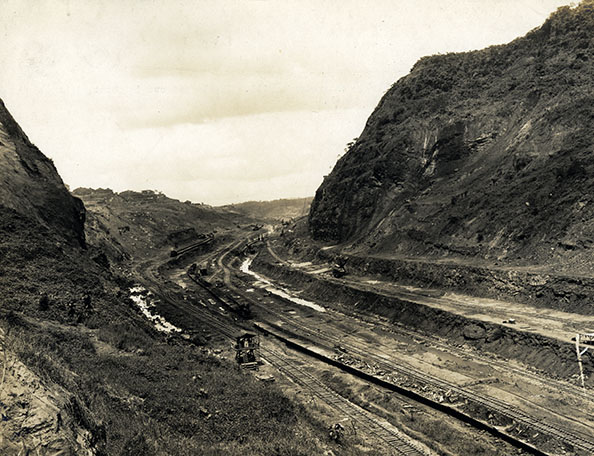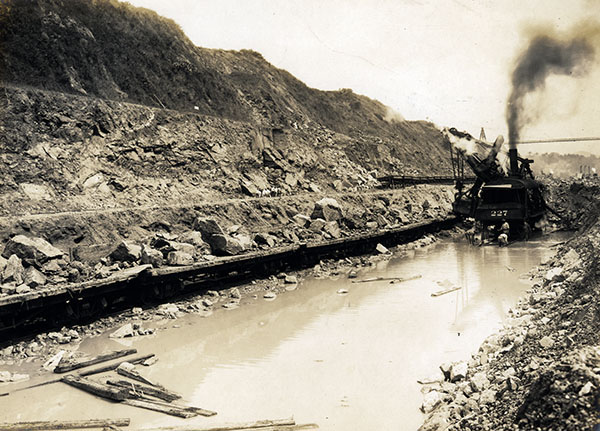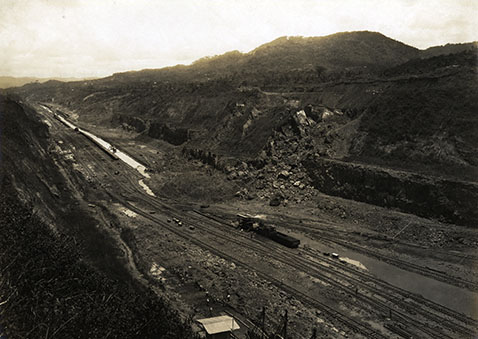Construction on the Panama Canal lasted nearly ten years. Much of the time, resources, and manual labor involved in the project were devoted to one fairly small section known as the Culebra Cut. Comprising only 7.8 miles of the canal’s total 50-mile length, the excavation of this land separating the Caribbean and Pacific Slope encompassed half of the work needed to create a waterway between the oceans.

The Culebra Cut, looking north from Contractor’s Hill
The biggest obstacle to the construction of the Culebra Cut was its location crossing the Continental Divide, the mountain ranges which separate the watersheds that drain into the Pacific Ocean from those that drain into the Atlantic Ocean. The construction of the Culebra Cut required digging through a section of the Andes Mountains — a task that would prove fatal for many laborers. The photographs in this section of the exhibit were all taken from various locations within the Culebra Cut during its construction.

A large break in the west bank of the Culebra Cut
Work on the Culebra Cut was grueling and tremendously hazardous. Throughout its construction, the Culebra Cut was hardly ever inactive, with laborers working day and night in weather over 100 degrees Fahrenheit. Worker injury and fatality were frequent occurrences. Simply operating the equipment needed to dig through the side of a mountain — trains, dynamite, cranes, and high scaffolding — claimed the lives of many laborers. The most common equipment-related death was due to misfiring dynamite. These accidents were often unfairly blamed on workers at the time, but it has since been discovered that the humid climate and interactions with other equipment likely triggered premature explosions.

A steam shovel and laborers at work within the Culebra Cut: just one piece of dangerous equipment used during its construction
A major engineering problem and additional source of danger in the area was landslides, which could happen at any moment and were completely unpreventable. The materials involved in the excavation ranged from soft clay to hard rock. When materials of different density are piled on top of one another, they can provoke large slides. The largest recorded in the Culebra Cut covered an area of 75 acres (approximately 57 football fields). The landslides often started slowly, but if unnoticed, they could completely bury a crew of laborers in debris.

Piles of material posed landslide risks in the Empire District
PREVIOUS SECTION: The Road to Construction
NEXT SECTION: The Forgotten Builders